
Indoor Gardening: Microgreens, Vegetables, Fruit, and Herbs
Last Updated: Apr 13, 2025How many times have you peered into your refrigerator and not found anything that excites you? Food should be exciting. Flavors should make your taste buds dance, and nutrients should fill your mind and body with energy and satisfaction. Chefs use fresh ingredients like microgreens, herbs, and citrus to enhance flavor, add texture, and to garnish finished dishes. Why can't you?
Anyone can grow fresh food indoors, even if you've never gardened before. Indoor gardens are perfect for urban homes without yard space, apartments, condos, year-round gardening, and even for people whose allergies keep them inside.
Microgreens, sprouts, and herbs can all be grown right on your kitchen windowsill in just a few weeks. It's even possible to grow fruits and vegetables inside with the right conditions.
Table of Contents
- What Are Microgreens?
- Why Grow Microgreens?
- Microgreens Are Healthy
- How to Use Microgreens in the Kitchen
- Ideas for Using Microgreens:
- How to Grow Microgreens Indoors
- What Else Can I Grow Indoors?
- Hydroponic Vegetables
- What Vegetable or Fruit Grows Fastest Indoors?
- What Vegetable or Fruit Takes the Least Space to Grow?
- What Vegetable or Fruit is the Easiest to Care For?
- DIY Ideas for Indoor Gardens
- Indoor Vegetable Growing Kits
- Grow Your Own Microgreens, Vegetables, Fruit, and Herbs Inside

What Are Microgreens?
Microgreens are trending on social media and are popping up in interior decorating plans. They can even be found on the menus at fine dining restaurants around the world. But what are they?
Aptly named, microgreens are precisely that: miniature versions of mature vegetables and herbs. The only difference is that you harvest microgreens while they're young and small, rather than waiting for the full-grown plant.
Popular microgreens include pea shoots, wheatgrass, baby arugula, beet tops, broccoli shoots, radish greens, chard, and mustard greens.
You might also consider growing sprouts, which are often confused with microgreens. The difference here is microgreens are grown in soil, and sprouts are soil-free, growing with just water and light. Popular sprouts include alfalfa, lentil, and mung bean.
Why Grow Microgreens?
Microgreens pack a flavorful punch into their tiny leaves and are an excellent addition to any meal. Chefs often use them to add texture and fresh flavor to dishes and as attractive finishing garnishes.
Microgreens are easy to grow inside and are ready to harvest in as little as 2-3 weeks. Such a quick harvest makes microgreens an ideal crop for impatient gardeners and a fun activity to share with kids. And, because they're grown indoors, microgreens can be grown year-round, even when it's snowing outside.
Microgreens Are Healthy
One of the top reasons people grow microgreens is for their nutritious boost. Studies show these tiny greens contain 40% more nutrients than their mature counterparts, including Vitamin C, Vitamin E, Vitamin K, Lutein, and Beta-Carotene.
Even just a pinch of microgreens added to a salad, sandwich, or chicken breast can increase your overall health and leave you feeling more energetic. Growing microgreens on your kitchen windowsill make these cut-and-go greens an easy grab for nutritious snacks and healthier dinners.

How to Use Microgreens in the Kitchen
Microgreens are easy to use in the kitchen and go with just about anything. Microgreens are best enjoyed fresh, to get the most nutrients, which means they don't need to be cooked!
Ideas for Using Microgreens:
- Garnish pasta
- Add them to salads
- Pile them on sandwiches
- Blend them into smoothies and juices
- Top finished meals like stir-fries and chicken

How to Grow Microgreens Indoors
Microgreens are super easy to grow indoors, even if you've never grown anything before. All you need is a sunny space, soil, a pot, seeds, and water.
Microgreens are a beautiful addition to kitchen windowsills, dining rooms, shelves, and end tables - so long as they get a little sun and good air circulation. They can be grown in any pretty container you may have with proper drainage or in a specially designed microgreen growing kit.
Steps to Grow Microgreens:
- Prepare a container with drainage holes and indoor potting soil
- Plant your seeds about 1/4 inch deep
- Water only when the soil is dry
- Harvest microgreens with clean scissors. Wash, dry, and eat

What Else Can I Grow Indoors?
Just about any plant can be grown inside with the right conditions. All plants need is soil, water, air, and light. All of these conditions can be created artificially indoors, which means you can grow an entire garden inside.
Greens and herbs are the easiest to grow inside since they need the least sun. If you'd like to grow fruits and vegetables indoors, you may need to add a grow light or two to give them their minimum of six hours of sunlight each day. You might also add a cool-mist humidifier to keep your indoor humidity level right for plants like tomatoes and peppers.
Not sure what to grow? The best rule of thumb is to grow what you'll use. For example, if you enjoy making happy hour cocktails, you might consider growing an indoor lime tree or a small pot of mint. And, if you cook a lot, fresh herbs are a joy to have within arms reach.

Indoor Food Growing Ideas
- Greens: kale, lettuce, spinach, and chard
- Herbs: fennel, parsley, cilantro, basil, oregano, thyme, chives, and rosemary
- Vegetables: green beans, carrots, onions, garlic, and peppers
- Fruits: tomatoes, strawberries, blueberries, lemons, and limes
Hydroponic Vegetables
If you like the idea of growing food indoors but aren't sold on intentionally bringing dirt into the house, let us introduce you to hydroponic gardening.
How Do I Grow Hydroponic Vegetables?
Hydroponic gardening is a method of growing plants without soil. Instead, plants are fed a specially formulated solution to grow and can be grown up to 50% faster than plants grown outdoors. There are six types of hydroponic gardening, including Deep Water Culture (DWC), Ebb & Flow, Wicking, Drip, Aeroponic, and the Nutrient Film Technique (NFT).

What Vegetable or Fruit Grows Fastest Indoors?
Impatient? Microgreens and sprouts are among the fastest vegetables to grow. Spicy Purple Radish microgreens are ready in just six short days! Mushrooms can also be extremely quick to grow and don't even need sun.

What Vegetable or Fruit Takes the Least Space to Grow?
You can grow your own food indoors even if you live in an apartment or tiny home. Microgreens, herbs, and scallions will all thrive in a small container and make a beautiful addition to any home. Herbs like parsley, basil, thyme, rosemary, and mint also do double duty as natural air fresheners.
For small space plants, choose a small container with good drainage. A long window box works just as well as an old tin can with holes poked in the bottom.

What Vegetable or Fruit is the Easiest to Care For?
You don't need to be an expert gardener to grow food indoors. Shitake, Button, and Oyster mushrooms are incredibly easy to grow inside, and they don't even need sun. Just plant them, leave them in a warm, dark area, and enjoy your own homegrown mushrooms in only a few weeks.
Root vegetables, including carrots, beets, potatoes, and radishes, are also really easy to grow. All you need to do is make sure they're planted in deep pots, kept watered, and get a little light.

DIY Ideas for Indoor Gardens
Your indoor garden can be as simple as a single planter or can fill up an entire sunroom. It all depends on how much time and space you'd like to dedicate to growing food indoors.
First, think about what you'd like to grow and where you'd like your plants to live. If you're just going to grow a few herbs and microgreens, you might choose a few coordinating pots to place on a windowsill. If you'd like to grow more than what your windowsill will hold, you might consider adding shelves to stack your plant babies.
If you have your heart set on growing things like tomatoes or peppers that require more sun, you'll need to plan your indoor garden with grow lights. If you go this route, make sure you choose light bulbs made specifically for growing plants. These bulbs have a different wavelength than traditional indoor light bulbs to help your plants thrive.
Consider growing edible indoor plants in:
- Offices
- Studios
- Kitchens
- Sunrooms
- Bedrooms
Once you've chosen your indoor gardening space and the plants you'd like to grow, it's time to get creative and build your garden! Plants can be grown in all sorts of containers, given adequate drainage.
Creative Gardening Containers:
- Wide bowls
- Window boxes
- Decorative pots
- Galvanized tubs
- Hanging planters
- Hand-painted pots
- Tomato sauce cans
- Glass-front cultivators
Adding an extra personal touch here and there can turn any shelf or centerpiece into a beautiful, edible focal point. You might add in kick knacks from your travels, creative lighting, mirrors, a pop of paint, a fishbowl, a moss wall, or even a little water fountain. The sky is the limit!
Indoor Vegetable Growing Kits
Want to get your garden started quicker?
Kits make it possible to start an indoor garden within minutes. You can find indoor growing kits explicitly designed for herb gardening, microgreens, mushrooms, and even ready-to-go hydroponic growing kits.

Minimalist Herb Kit
This elegant and straightforward hydroponic herb growing kit comes with seeds, plant food, and detailed instructions to start your indoor garden.

Stacking Garden Kit
The aeroponic Tower Garden can produce 20 different plants in the vertically stacked design requiring only three square feet.
Gardening & Outdoor
Shop the best high-performing gardening and outdoor products that impact your health, wealth, and the planet through their use.
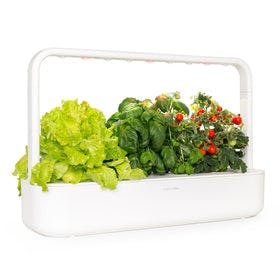
Click & Grow Smart Garden 9
Click & Grow
In Stock
3 Colors
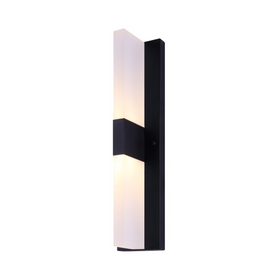
Canarm CORIN LED Black Outdoor Light
Canarm
Out of Stock
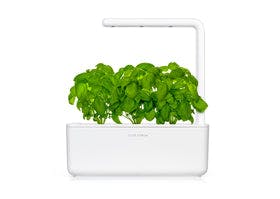
Click & Grow Smart Garden 3
Click & Grow
In Stock
3 Colors
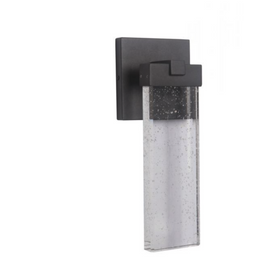
Craftmade Aria Outdoor LED Wall Mount Light
Craftmade
In Stock
2 Colors
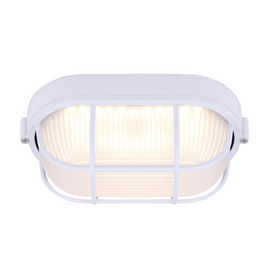
Canarm LOL386WH White LED Outdoor Sconce
Canarm
In Stock
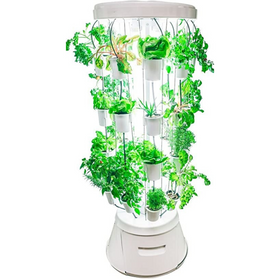
Nutritower Vertical Hydroponic Indoor Garden
Nutritower
Out of Stock
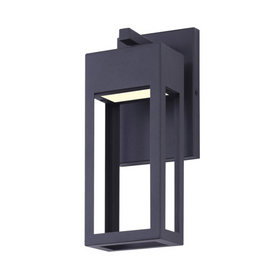
Canarm FAE LED Black Outdoor Light
Canarm
In Stock
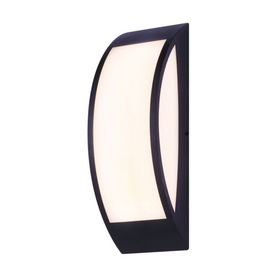
Canarm BARDO LED Black Outdoor Light
Canarm
In Stock
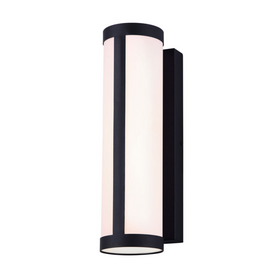
Canarm SINDRI LED Black Outdoor Light
Canarm
In Stock
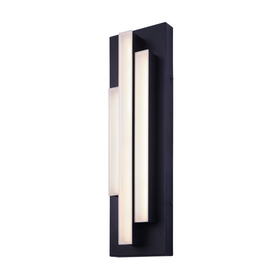
Canarm LOKI LED Black Outdoor Light
Canarm
In Stock

Modern Glass Garden Kit
Though less of a kit and more of an appliance, the stylish Urban Cultivator can grow eight different microgreen varieties at once.

Mushroom Growing Kit
Perhaps the easiest gardening kit yet is this mushroom growing kit. Just place the entire box near a window in your home, mist it twice a day, and you'll be eating homegrown oyster mushrooms in as little as ten days.

Grow Your Own Microgreens, Vegetables, Fruit, and Herbs Inside
Growing edible plants indoors is an excellent way to eat healthier year-round. Indoor plants also serve as attractive interior décor and have actually been proven to reduce stress and increase productivity.
If you're new to gardening, an indoor vegetable growing kit or a small potted herb garden is a great place to start. Or, go all out and build yourself a reading nook salsa garden of tomatoes, peppers, garlic, and cilantro complete with a funky grow light and lime tree.
We'd love to hear about your edible indoor gardens! Tell us what you're growing!
Laura Bourland
Laura grew up in the California suburbs, far removed from environmentalism, but nature always has a way. She uprooted her life in 2015, moving to the countryside of Washington to live a more sustainable and simple life on 12 acres. She and her fiancee are learning on the job as they attempt everything from gardening and natural pest control to eco-friendly building and home improvement.
